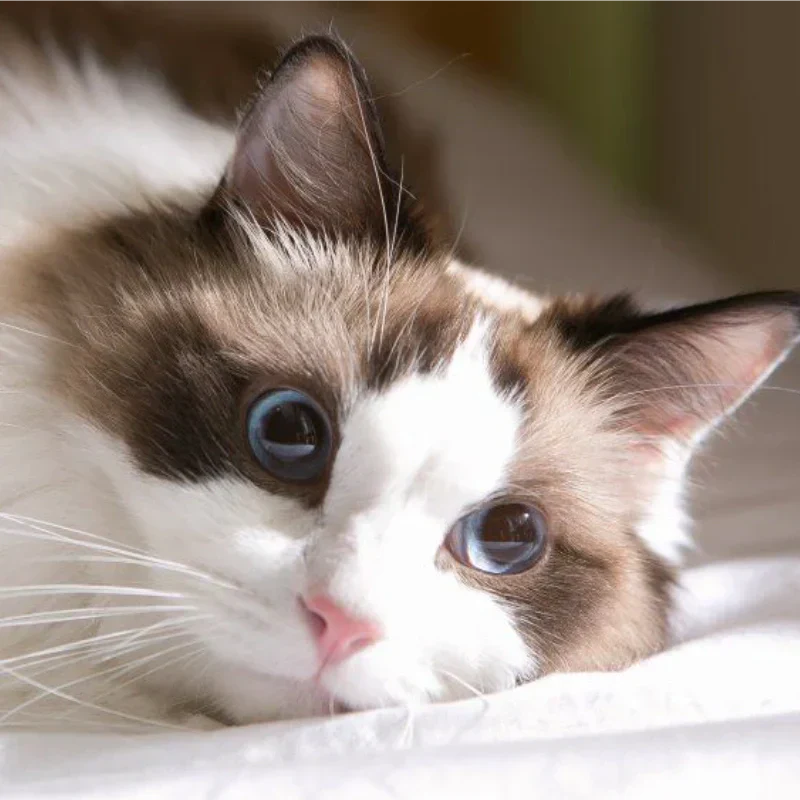Have you ever noticed that your Ragdoll cat looks “whiter” in the summer? The color of the coat is not as rich as in winter, and the darker areas of the back seem to have been “washed out” by the sunlight - you read that right, it's really changing color!
Don't worry, it's not a skin condition, it's not old age, it's the “little magic” that lives inside the Ragdoll cat's body that quietly kicks in when the temperature rises.

Ragdoll cats have a special gene called the “temperature-sensitive pigment gene” (Himalayan gene), which is a partial albino gene. Ragdoll cats have a special gene called the "Himalayan gene", which is a part
Simply put, the lower the temperature of the body, the darker the hair color; the higher the temperature, the lighter the color.
So you will find:
Winter: low temperatures, body temperature drops, coat color becomes darker, and the overall “color block” is clear and rich;
Summer: Higher temperatures and higher body temperatures inhibit hyperpigmentation, resulting in lighter colors, blurred borders, and a “faded” appearance.

The most obvious areas of change are usually:
Back, sides of the body: this is the area most likely to “fade” in the summer;
Limbs, tail, ears, face: these areas are cooler and stay darker.
You'll notice the Ragdolls turning into soft creams and silvery grays in the summer, and then gradually becoming richer and more three-dimensional in the winter, like a watercolor painting of a cat for all seasons.
Ragdolls aren't the only ones with this temperature-sensitive gene: Siamese, Birman, Himalayan, and Tonkinese.
If you pay attention, you will find that the rhythm of their color changes throughout the year is temperature-dependent. Even the new coat may be darker or lighter when shaved or when an area is injured, and the temperature difference increases!

What should owners look for?
Lighter color is a natural, healthy response and does not indicate malnutrition or physical abnormalities. You don't need to intervene extra, just make sure your cat:
Is in normal spirits and has a good appetite
No abnormalities such as hair loss, baldness, or skin rashes
A well-balanced diet, adequate hydration, and a comfortable living environment
You can rest assured that your cat will be able to “change seasons”!
However, you do need to pay attention to prevent heatstroke in summer - Ragdoll cats have dense hair and are afraid of heat but not good at self-regulation. You can turn on the air conditioner, prepare a cool and airy resting area, or use a combination of an outdoor cat house + ice pack to create a summer cat house for your Ragdoll cat. If your Ragdoll cat is used to outdoor activities, shade and heat protection must be in place!
You think it's just lounging around, but in fact, it's quietly changing colors. In the world of cats, every color change is a gentle magic done by nature and genes.


Share and get 15% off!
Simply share this product on one of the following social networks and you will unlock 15% off!